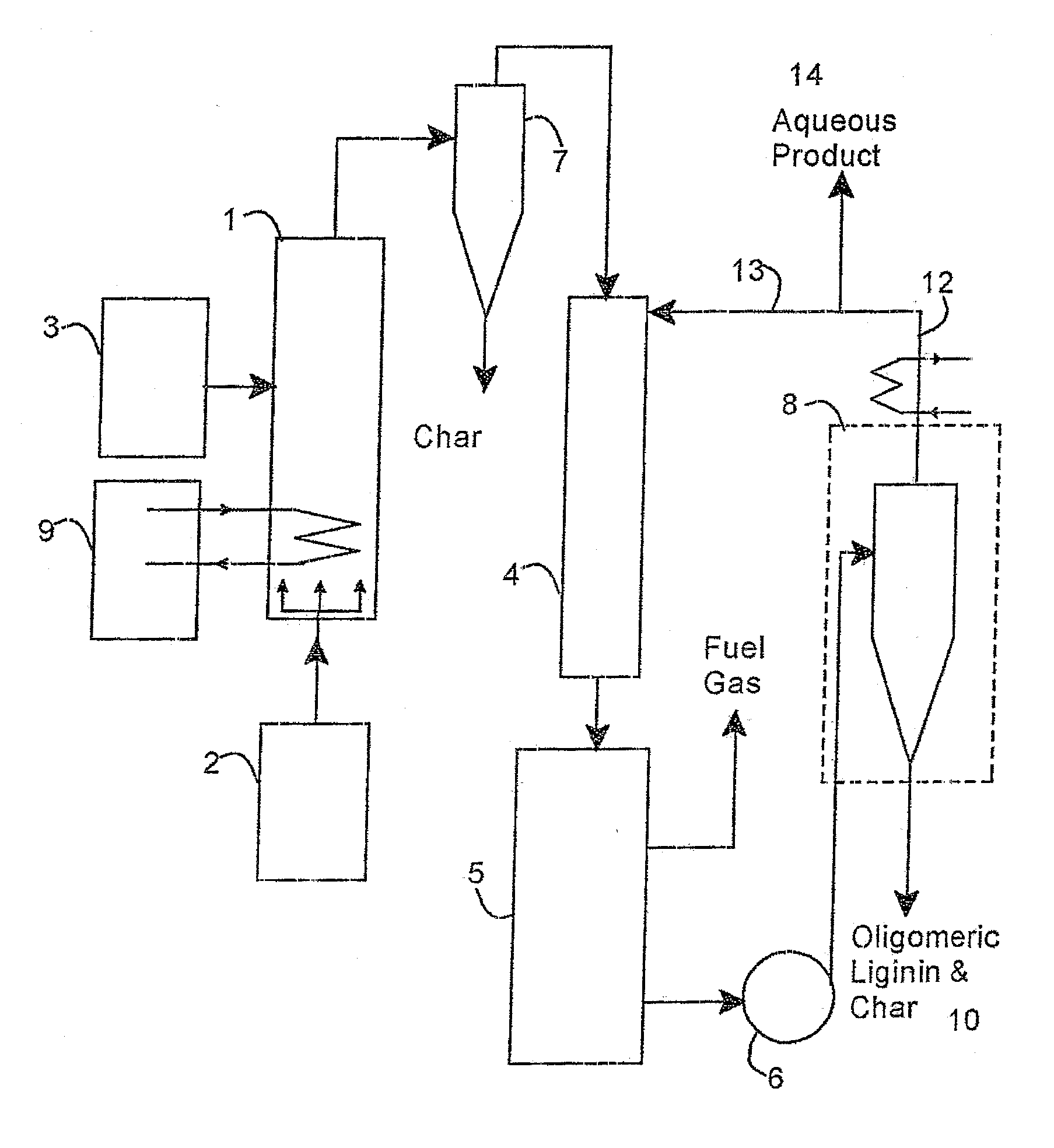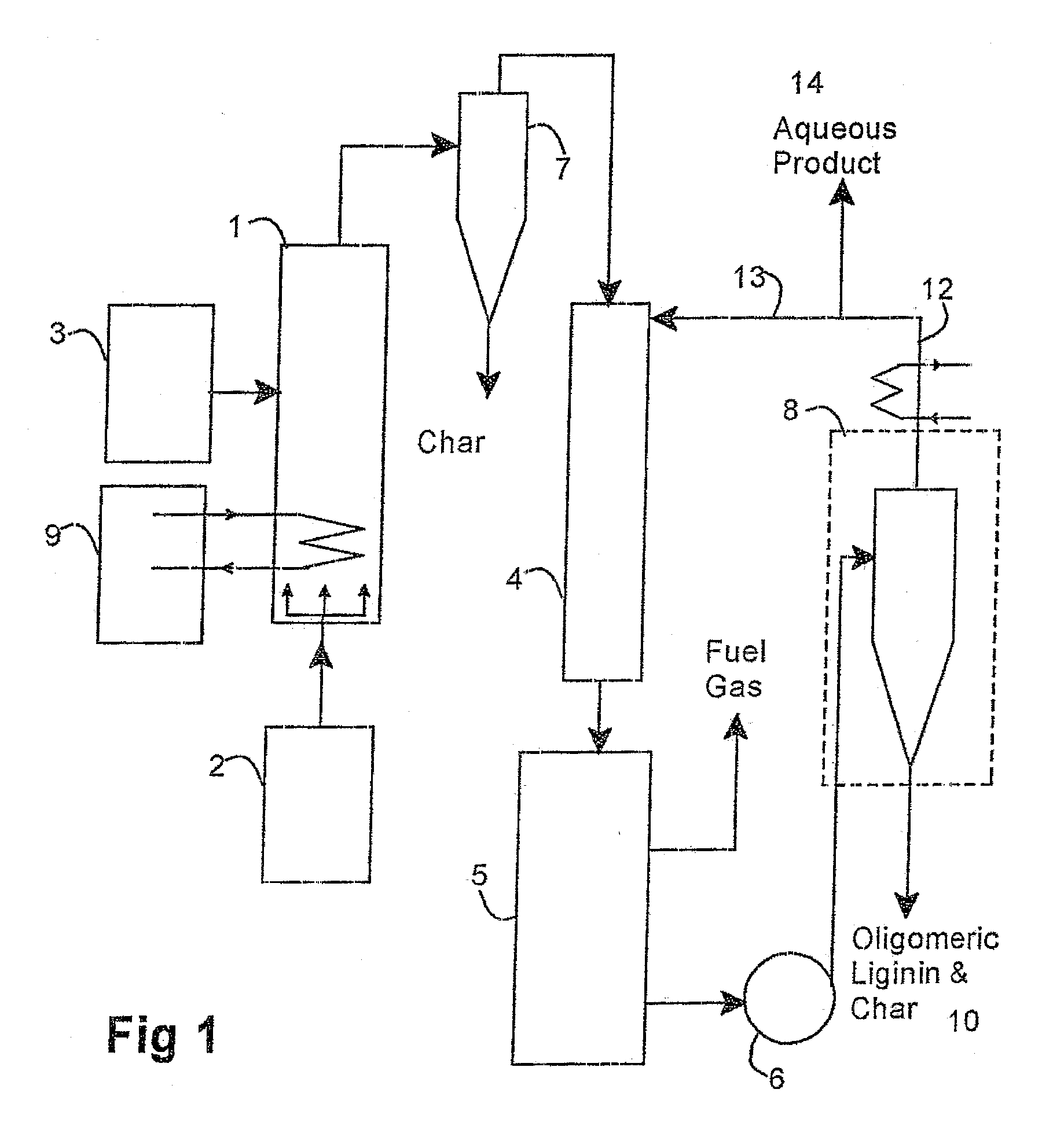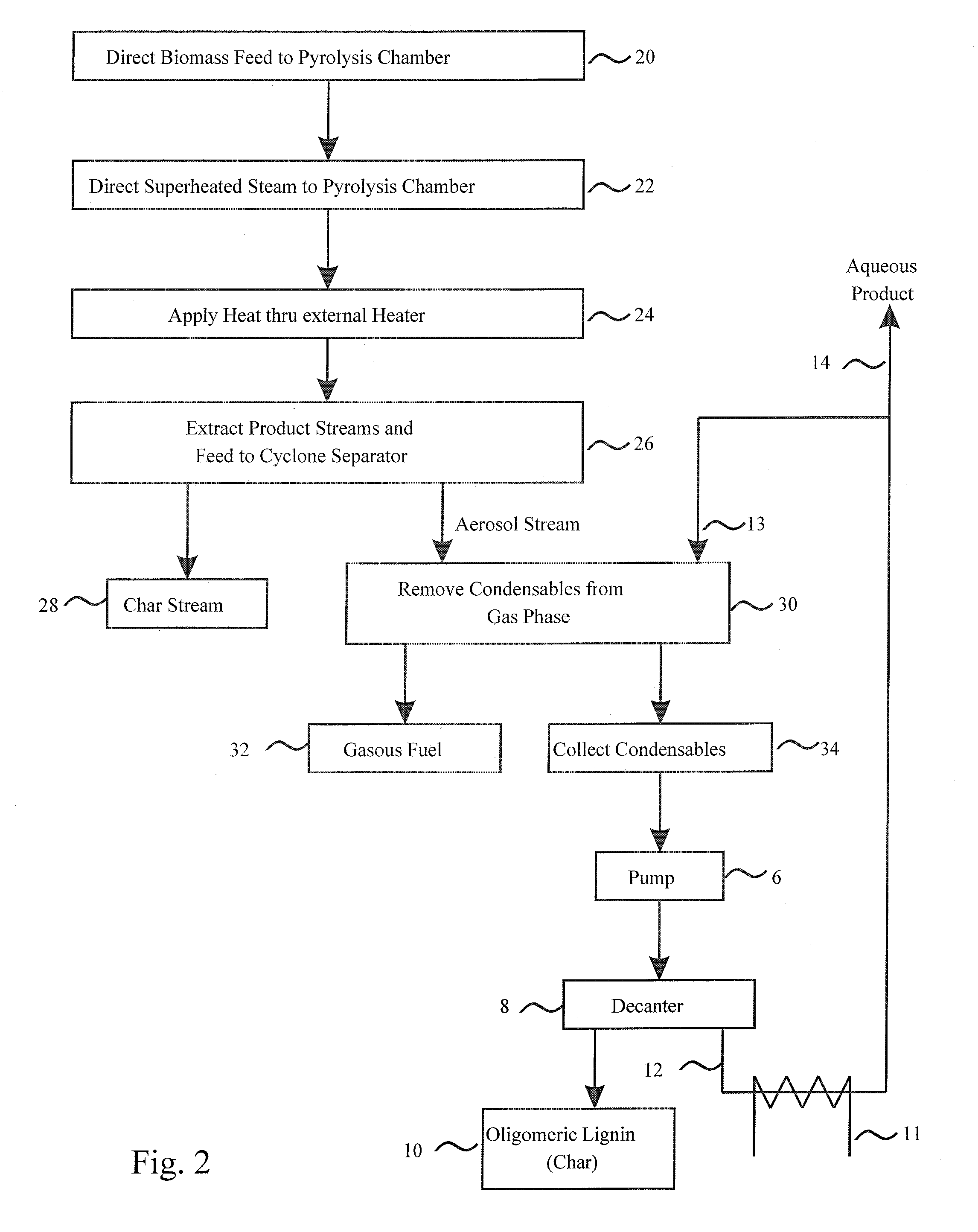Method of producing hodge carbonyls and oligomeric lignin
a technology of oligomeric lignin and hodge carbonyl, which is applied in the fields of gas purification by liquid washing, glucose production, products, etc., can solve the problems of difficult to understand the reasons of dry and ground biomass, high undesired products such as soot and coke, and the commercial potential of liquid fuel often called “bio-oil” has not yet been fully realized
- Summary
- Abstract
- Description
- Claims
- Application Information
AI Technical Summary
Benefits of technology
Problems solved by technology
Method used
Image
Examples
example 1
[0050]The object of this example is to demonstrate an augmented yield of key Hodge' carbonyls, hydroxyacetaldehyde and glyoxal, resulting from the pyrolysis of Avicel cellulose in steam versus non-steam processing.
TABLE 1Cellulose pyrolysis. Avicel.Yields of hydroxyacetaldehyde and glyoxalWt %, on dry feed baseTemperaturedeg C.HydroxyacetaldehydeGlyoxalI. STEAM in use57516.94.255019.22.952516.34.4II. NO STEAM in use60012.13.455010.94.052510.63.74754.90.3
[0051]The yields of hydroxyacetaldehyde, in particular, are consistently larger when cellulose is processed in steam.
example 2
[0052]The object of this example is to demonstrate the augmented yields of Hodge' carbonyls from bleached pulps
TABLE 2Pyrolysis feed - bleached pulp (Tembec)Temperature - 550 deg C.Yields, wt %, dry feed basisSteamNon-steamprocessingprocessingRun #220222Hydroxyacetaldehyde18.010.7Glyoxal4.11.5Acetol2.02.0Formaldehyde5.13.6
[0053]Yields of key Hodge' carbonyls are consistently higher in steam processing.
example 3
[0054]The objective of Example 3 is to demonstrate elevated-augmented yields of Hodge carbonyls in a specified temperature above 490 deg C.
TABLE 3Pyrolysis feed - unbleached pulp and cellulosic sludge fromclarifier (Tembec) Steam processingYields, wt % dry basisFeedPulpPulpPulpSludgeTemperature, deg C.450500550500GlyoxalTrace2.11.80.9MethylglyoxalTrace0.90.8Hydroxyacetaldehyde6.412.012.011.0Formaldehyde6.77.75.9Acetol2.84.7Nd2.5
[0055]The table illustrates, that cellulosic pulps and sludges can be pyrolyzed, preferably at 500-550 deg C., to yield Hodge' carbonyls
Lignocellulosics Pyrolysis
PUM
| Property | Measurement | Unit |
|---|---|---|
| Fraction | aaaaa | aaaaa |
| Fraction | aaaaa | aaaaa |
| Fraction | aaaaa | aaaaa |
Abstract
Description
Claims
Application Information
 Login to View More
Login to View More - R&D
- Intellectual Property
- Life Sciences
- Materials
- Tech Scout
- Unparalleled Data Quality
- Higher Quality Content
- 60% Fewer Hallucinations
Browse by: Latest US Patents, China's latest patents, Technical Efficacy Thesaurus, Application Domain, Technology Topic, Popular Technical Reports.
© 2025 PatSnap. All rights reserved.Legal|Privacy policy|Modern Slavery Act Transparency Statement|Sitemap|About US| Contact US: help@patsnap.com



